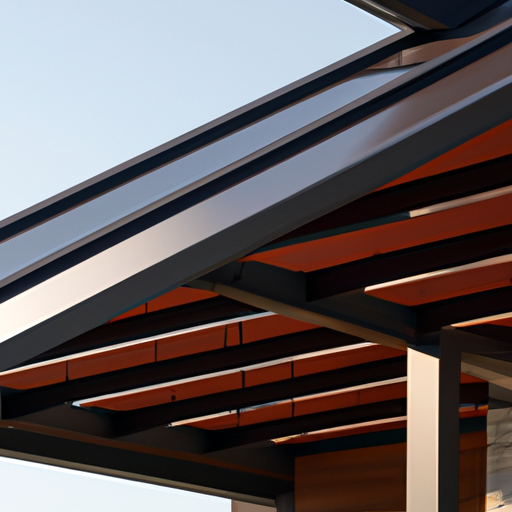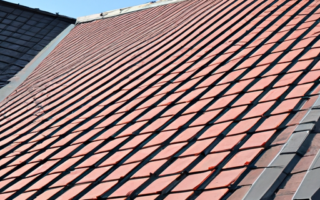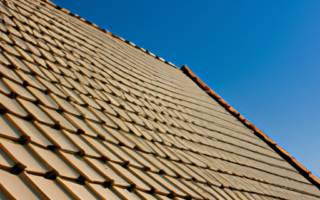Roof Construction: A Comprehensive Guide to Choosing the Right Materials
When it comes to roof construction, choosing the right materials is crucial. The type of roofing material you select not only affects the appearance of your home but also plays a significant role in its durability and energy efficiency. With a vast array of options available in the market, it can be overwhelming to make a decision. This comprehensive guide will help you navigate through the various materials, understand their benefits, and select the optimal roofing material for your construction project.
One of the most popular roofing materials is asphalt shingles. They are affordable, easy to install, and come in a variety of colors and styles to suit your aesthetic preferences. Additionally, asphalt shingles are durable, with a lifespan of approximately 20-30 years. They provide excellent protection against harsh weather conditions and are suitable for different types of roofs.
Metal roofing is another popular option due to its longevity and durability. Made from steel, aluminum, or copper, metal roofs can last up to 50 years or more with proper maintenance. They are resistant to fire, insects, and rot, making them a low-maintenance choice. Metal roofs are also energy-efficient as they reflect sunlight, reducing heat absorption and cooling costs.
If you’re looking for a more traditional and natural approach, wood shingles or shakes might be the right choice for you. Wood roofs offer a unique, rustic aesthetic and can last up to 30 years when properly maintained. However, it’s important to note that wood shingles require regular upkeep, including cleaning and treating for mold, rot, and insect infestation.
For those seeking an eco-friendly option, consider green roofs or living roofs. These roofs consist of a layer of soil and vegetation, providing additional insulation, reducing stormwater runoff, and improving air quality. Green roofs can help mitigate the urban heat island effect and create a natural habitat for plants and wildlife. While they require specialized installation and maintenance, their environmental benefits make them worth considering.
Lastly, for those looking for ultimate durability and resistance against extreme weather conditions, consider concrete or clay tiles. These materials can last for over 50 years and are fire-resistant. Concrete and clay tiles are energy-efficient, as they provide excellent insulation and reduce cooling costs. However, it’s important to ensure that the structure can support the weight of these heavy materials before installation.
Choosing the right roofing material is a critical decision that will impact the longevity, energy efficiency, and overall aesthetics of your construction project. Consider the climate, lifespan, maintenance requirements, and sustainability factors of each material before making a final choice. Consulting with a professional roofing contractor can also provide valuable insights and ensure that you make an informed decision.
Exploring Roofing Techniques: From Traditional to Modern Innovations
Exploring Roofing Techniques: From Traditional to Modern Innovations
When it comes to roof construction, there are a variety of techniques that have been used throughout history. From traditional methods that have stood the test of time to modern innovations that offer improved efficiency and sustainability, exploring different roofing techniques can help you make an informed decision for your building project.
Traditional roofing techniques often involve the use of materials such as clay or slate tiles, wooden shingles, or thatch. These methods have been used for centuries and are still popular today due to their timeless aesthetic appeal and durability. Clay tiles, for example, are known for their ability to withstand harsh weather conditions and maintain their color and shape over time.
Another traditional technique is wooden shingle roofing, which has a rustic charm and is commonly used in traditional and historical buildings. Thatched roofs, on the other hand, are made from dry vegetation such as straw or reeds and provide excellent insulation, making them suitable for both warm and cold climates.
However, as technology advances, so do roofing techniques. Modern innovations have introduced new options that offer improved performance, energy efficiency, and sustainability. One such technique is the use of metal roofing, which is becoming increasingly popular due to its durability and ability to reflect sunlight, reducing the need for air conditioning and ultimately lowering energy costs.
Green roofing techniques have also gained significant attention in recent years. These roofs are covered with vegetation that not only provides an aesthetically pleasing look but also offers numerous environmental benefits. Green roofs help to reduce stormwater runoff, improve air quality, and provide insulation, reducing heating and cooling costs.
In addition to traditional and modern roofing techniques, it’s essential to consider the sustainability aspect when choosing a roofing method. Sustainable roofing materials, such as recycled or reclaimed materials, help reduce waste and the environmental impact of a building. Additionally, investing in high-quality insulation and proper ventilation can further enhance a roof’s energy efficiency.
In conclusion, exploring different roofing techniques can help you find the perfect fit for your building project. Whether you opt for traditional methods that have stood the test of time or modern innovations that prioritize sustainability and energy efficiency, understanding the pros and cons of each technique is crucial. By considering factors such as durability, aesthetics, energy efficiency, and sustainability, you can make an informed decision that meets your specific needs and contributes to a long-lasting and eco-friendly roof.
The Importance of Sustainability in Roof Construction: Building for the Future
Sustainable construction practices have become a top priority in the modern world, and the roofing industry is no exception. The importance of sustainability in roof construction cannot be overstated, as our planet continues to face environmental challenges and the need for more eco-friendly solutions. Building roofs that are not only durable and functional but also environmentally conscious is crucial for ensuring a better future.
One of the key aspects of sustainable roof construction is the choice of materials. Traditional roofing materials, such as asphalt shingles and concrete tiles, have a significant negative impact on the environment. They contribute to carbon emissions during production and disposal, and they are not biodegradable. However, there are several sustainable alternatives available in the market today.
Sustainable roofing materials include recycled metal, which is not only durable but can be 100% recycled at the end of its life cycle. Another popular option is green roofs, which are covered with vegetation and provide various environmental benefits. Green roofs help reduce urban heat island effect, improve air quality, manage stormwater runoff, and provide insulation.
In addition to the choice of materials, the construction techniques employed in roof installation also play a significant role in sustainability. Proper insulation, for example, can reduce energy consumption by maintaining stable temperatures inside the building. This not only reduces the carbon footprint but also lowers energy costs for the occupants.
Furthermore, sustainable roof construction focuses on improving the longevity of roofs. By using high-quality materials and implementing proper maintenance practices, roofs can last longer and reduce the need for frequent replacements. This significantly reduces waste generation and helps conserve resources.
Lastly, sustainable roof construction considers the life cycle analysis of materials and techniques used. This means evaluating the environmental impact of a roof from its initial manufacturing stage to its disposal. By assessing factors such as energy consumption, carbon emissions, and waste generation, builders can make informed decisions and choose the most sustainable options available.
In conclusion, sustainability is a crucial aspect of roof construction for building a better future. By using eco-friendly materials, employing sustainable construction techniques, and considering the life cycle analysis, roofs can be built to minimize their impact on the environment. As homeowners, builders, and architects become increasingly aware of the importance of sustainability, it is essential to prioritize eco-friendly practices in roof construction for the benefit of both current and future generations.
Expert Tips and Advice for Successful Roof Construction Projects
When it comes to roof construction projects, having expert tips and advice is crucial for ensuring successful outcomes. Whether you are building a new roof or renovating an existing one, there are key considerations to keep in mind to achieve a durable, aesthetically pleasing, and sustainable roof.
One of the first things to consider is the choice of materials. Roofing materials play a significant role in the overall performance and longevity of a roof. Key factors to consider include the climate in your region, local building codes and regulations, as well as personal preferences in terms of aesthetics and budget. Some popular roofing materials include asphalt shingles, metal, clay tiles, and slate. It’s crucial to consult with roofing experts who can guide you in selecting the most suitable material for your specific project.
Another important aspect of roof construction is the technique employed during the installation process. Proper installation techniques ensure that the roof is structurally sound and can withstand the elements over time. It’s essential to work with experienced and qualified roofing contractors who have the necessary expertise in roof construction. They will be able to assess the condition of the existing roof deck, identify any underlying issues, and implement the appropriate construction techniques to ensure a successful outcome.
Sustainability is a growing concern in the construction industry, and roofing is no exception. Sustainable roof construction involves using eco-friendly materials, implementing energy-efficient designs, and incorporating green technologies. For example, cool roofs, which have a reflective surface that reduces heat absorption, can contribute to energy savings and lower cooling costs. Additionally, installing solar panels as part of the roof system can help generate clean and renewable energy.
Proper insulation is another crucial aspect of roof construction, both for energy efficiency and comfort. Insulation helps regulate temperature levels within the building, reducing the need for excessive heating or cooling. This, in turn, leads to energy savings and lower utility bills. Additionally, adequate insulation prevents issues such as condensation and mold growth, which can compromise the integrity of the roof and the overall structure.
Regular maintenance and inspections are essential to ensure the long-term performance and durability of the roof. It’s recommended to schedule annual or biannual inspections by roofing professionals to identify any potential issues early on and address them promptly. This can save you from costly repairs or premature roof replacement.
In conclusion, successful roof construction projects require expert tips and advice. Choosing the right materials, employing proper installation techniques, incorporating sustainability practices, and ensuring proper insulation and maintenance are all key factors in achieving a durable and sustainable roof. Consult with roofing experts to get the best guidance for your specific project and ensure a successful outcome.



